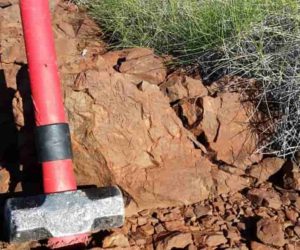
Writing in PNAS, scientists from Cologne university present important new constraints showing that plate tectonics started relatively slow, although the early Earth’s interior was much hotter than today.
In an international collaboration earth scientists at the University of Cologne discovered that during Earth’s early history mantle convection on, i.e. the internal mixing of our planet, was surprisingly slow and spatially restricted. This finding is unexpected because our planet was much hotter during the first hundreds of million years after its formation. Therefore, it has been assumed that mantle convection on Earth was much faster in its infancy. According to their study “Convective isolation of Hadean mantle reservoirs through Archean time,” however, the earth did not experience full speed mantle convection until 3 billion years ago, when modern plate tectonics is believed to have fully operated.
For their study, the geologists investigated up to 3.5 billion years old igneous rocks from NW Australia that cover 800 million years of Earths early history. The analysis of these rock successions revealed that the oldest samples exhibit small anomalies in the isotope abundances of the element tungsten (W) that progressively diminish with time. The origin of these anomalies, namely the relative abundance of 182W, relates to ancient heterogeneities in the terrestrial mantle that must have formed immediately after formation of the Earth more than 4.5 billion years ago. The preservation of these 182W anomalies in the igneous rocks from NW Australia demonstrate that pristine mantle reservoirs from the beginning of our planet were conserved over timescales exceeding more than one billion years.
This finding is very surprising, because higher mantle temperatures in the early Earth suggest that mantle convection was more extensive and much faster than today. Interestingly, the observed 182W anomalies start to diminish at around 3 billion years ago, within a geological era that is assumed to mark the beginning of modern plate tectonics. The onset of modern plate tectonics, involving subduction processes and mountain uplift, has been shown to be a key event triggering the emergence of large continental masses and an oxygen-rich atmosphere, all of which set the stage for the origin of more complex life.
Reference:
Jonas Tusch, Carsten Münker, Eric Hasenstab, Mike Jansen, Chris S. Marien, Florian Kurzweil, Martin J. Van Kranendonk, Hugh Smithies, Wolfgang Maier, and Dieter Garbe-Schönberg. Convective isolation of Hadean mantle reservoirs through Archean time. PNAS, 2020 DOI: 10.1073/pnas.2012626118
Note: The above post is reprinted from materials provided by University of Cologne.










